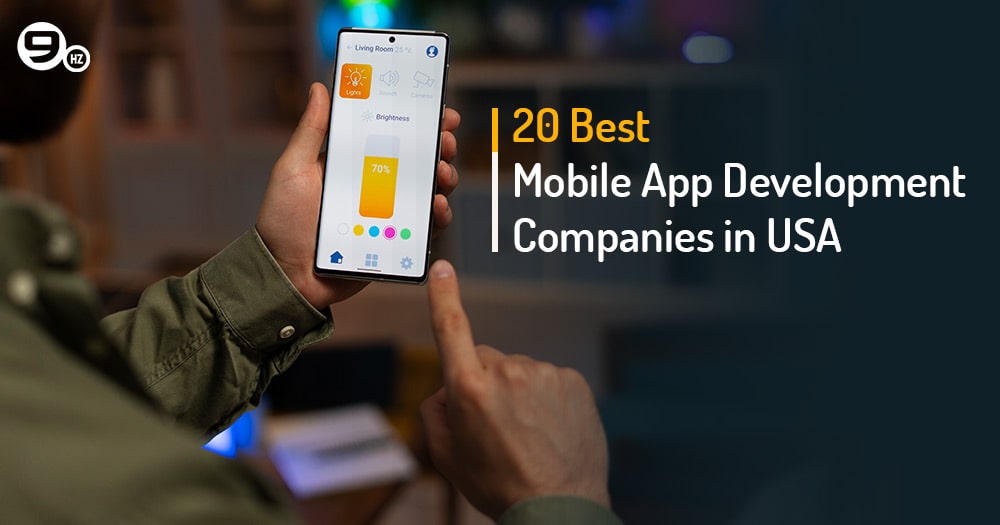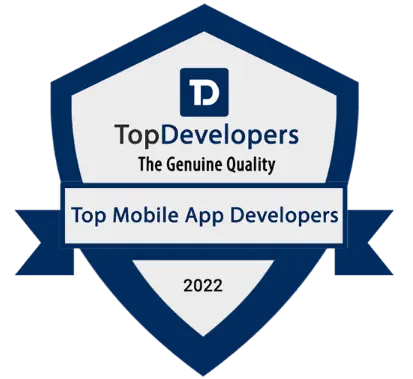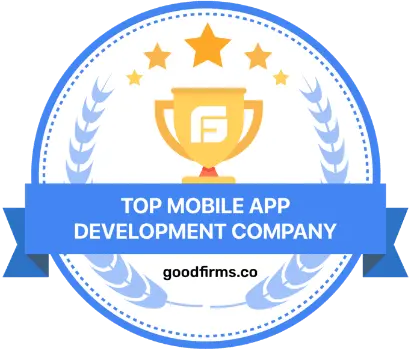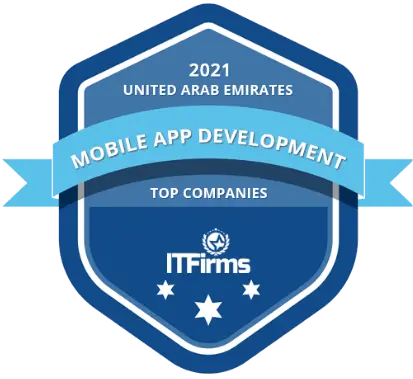The modern globalized market has made it crucial for business owners to explore ways to go digital to target the maximum audience. Thanks to mobile apps and websites, it is now easier for business owners to connect directly to their end users, understand the market sentiments, and make informed decisions. However, building mobile apps is often a time and resource-intensive process that is not affordable to all-sized businesses. Therefore, Power Apps use cases have made digitization easier for businesses by assisting in app development.
As reported by Microsoft, more than 86% of the Fortune 500 companies are now using Microsoft Power Apps for their digitization needs. Thus, there is no doubt in the statement that Microsoft Power Apps has made it a lot easier for businesses to build their customized mobile apps without going into the intense coding workload and investing millions of dollars and hours in the very beginning.
Let’s explore some of the use cases and Power Apps examples to understand how businesses across industries can benefit from it.
What are Power Apps?
Power Apps is a tool offered by Microsoft that enables businesses to build their own apps without much technical expertise and coding requirements. While you need a certain level of guidance from the IT professionals to impart the required features and integrate them into your system, the complicated computer language knowledge is not crucial when building digital products with Power Apps.
One can build creative apps optimized for different devices like computers, phones, and tablets. The apps are capable of collecting and saving information, tracking task progress, managing tasks, connecting to external tools like Excel, Dynamics 365, SharePoint, and much more.
The core competency of Power Apps is its low-code nature that enables users to build customized business applications for websites and mobile apps seamlessly without much programming. For example, it simplifies app development using the drag-and-drop functionality, Excel-like formula language, pre-built templates, and much more.
Top 11 Power Apps Use Cases That Deliver Real ROI in 2025
Power Apps is a highly scalable and versatile platform that enables businesses of all sizes and industries to build their mobile apps and connect to the target audience. Let’s explore some of the best Power Apps use cases that have been transforming business operations-
1. Workflow Management
Power Apps are globally used by businesses to manage their operational workflow in different domains like patient discharge approvals, client onboarding, and loan organization. There are hundreds of pre-built templates in Power Apps designed for typical workflows like emails, notifications, scheduling, project progress, task status, due dates, and much more.
- The templates enable the business owners to build mobile apps that already carry the required features and interactive portals.
- Power Apps also helps to build mobile apps that can offer deeper workflow analytics, including classification of the tasks according to their types, average completion time, complexity of the task, and much more.
- The apps are device-optimized so that the team members can access and control information from their mobile devices.
2. Financial Management
Irrespective of the business size and industry, thousands of businesses are already relying on mobile applications built with Power Apps to manage their business finances.
- Power apps come with highly useful features like expense reporting, account review, accounts processing, invoice creation, annual finance reporting, expense reporting, and business card management.
- The solution makes it very easy for businesses to actively track their income and expenses and better manage their finances.
3. Inventory Management
e-commerce, retail, and manufacturing businesses have been using the Power Apps platform for its capability to seamlessly manage and optimize a high volume of inventory.
- Multiple mechanisms are integrated into Power Apps mobile apps that help to seamlessly track the inventory.
- The automated inventory data uploading and editing make sure that the warehouse has a defined amount of inventory for a product.
- The features like RFID data storage, inventory search by keywords or serial number, creation and approval of purchase order, placing sales order, are some of the other features that can be integrated using the Power Apps platform to better manage the overall inventory.
4. Cost Control
It is highly essential for businesses to have better control over their costs to better optimize the financial resources and multiply the overall business revenues.
- Power Apps is capable of building highly secure mobile apps that offer cost estimation, annual budgeting, and transparent cost allocation.
- Businesses can track where and how much money is spent throughout the year in real time.
- It also curates the reports on the committed and actual costs, cost trends, and cost variances for the decision makers to enable them to implement the required changes.
5. Price Configuration
For businesses, it is very important nowadays to customize the pricing of their products and services according to the competitors and market trends.
- Power Apps use cases incorporate artificial intelligence to configure the prices of products in real time and make the required adjustments without compromising the overall profit margins.
- The software is also designed to update the product pricing and discounting data according to the given command.
- Features like sales approval and validation, a document designer to create different documents like customized quotes, proposals, engineering documents, contracts, and much more.
6. Asset Management
Whether it is financial assets, the machinery in a manufacturing unit, or the human resources, the asset management system is a popular Power Apps use case for businesses worldwide.
- It enables the functionality of asset check-in and check-out, which offers a transparent record of asset availability to the relevant authorities.
- Work order creation and routing offer information about who is using a particular company resource for the time period.
- The asset management system also tracks the performance of different mechanical resources to identify the need for maintenance and set reminders. This feature helps to lengthen the life of machines and significantly saves on costs.
7. HR Management
Human resources is a mutual department in businesses operating in different domains. Thus, Power Apps use cases include building robust mobile apps that can execute tremendous workforce planning, like production crew scheduling, nurse staffing, client meetings, marketing campaigns, scheduling interviews, and much more.
- Power Apps makes it very easy for HR professionals to manage the recruiting and onboarding of employees.
- It keeps the entire hiring process transparent to the upper deck of the company.
- Power Apps further help in the human resource management of the organizations, are secure employee database management, attendance and time tracking, performance review, enrolling in training, and much more.
8. Portals
- Portals are widely used platforms across organizations, educational institutions, government departments, and much more.
- Web portals enable the established entities to disseminate information among their employees, students, or team members in a secure manner.
- Power Apps allows developers to build different types of portals, exclusively designed according to user roles like employee, customer, patient, eCommerce owner, vendor, eLearning students, community members, business partners, insurance customers, investors, and much more.
9. Inspection and Audit Management
- One of the best Power Apps use cases is building business apps that help ensure periodic safety and compliance audits.
- It ensures that the overall operations comply with the defined protocols and industry regulations.
- From workplace health and safety audits, incident reporting, quality control, or collecting the overall customer data, everything can be streamlined using the customized Power Apps solutions.
10. Project Management
Irrespective of the size and nature of the project, Power Apps use cases are versatile options for establishing a better understanding and coordination among the team members.
- Power Apps business apps help to track the project progress, milestones, resources (including people, assets, and budget), ensure timely allocation, and much more.
- Team collaboration can be enhanced using the right business apps, where the team members are updated about the project progress in real time.
- The project management apps also help to report and share information about goals achieved, resource consumption, etc.
11. Booking and Scheduling Management
As modern time makes the lifestyle very busy and hectic for everyone, it has become crucially important for business owners to have their own scheduling and booking apps.
- With Power Apps solutions, customers can make appointments for the particular service, eliminating the need to wait in a long queue.
- Power Apps use cases include building mobile apps that help to schedule appointments, book rooms, reserve vehicles, edit the employees’ schedules, adjust/change/cancel appointments, push notifications for the appointment, and more.
Real World Power Apps Examples You Can Build Today
Power Apps is now widely used by businesses, and thus, there are thousands of examples of it being used by brands for better management, digitization, and control over their processes. Let’s have a look at the best Power Apps examples to understand how it can benefit your business as well-
1. Employee Leave Applications
It is highly challenging for enterprises and firms with thousands of employees to keep track of the attendance and leave requests of their employees. Thus, Power Apps helps to build mobile apps that simplify the holiday management processes in organizations. For instance, the employee can submit the leave request on the mobile with details like reason, dates, and time. The manager gets a unified view of this request with an option for approval or decline. As soon as the action is taken by the manager, the leave balance of the employee is updated.
2. Field Service Solutions
Field service solutions are one of the most developed types of apps using Power Apps that help establish a seamless communication medium between distant workers and the organization. For instance, it offers direct and instant access to dispatch and scheduling details, photos clicked by technicians are instantly shared with the firm, and the automated updates to offer seamless visibility also become easier. Thus, it reduces the chances of delays, conflicts, and manual workflow errors.
3. Invoice Generator
Firms are preferring Power Apps use cases to build their invoice generator applications. The app enables the user to generate an invoice within seconds and clicks. It helps in tasks like accurate calculation of totals, discounts, and taxes. At the same time, the overall process of delivering invoices to clients and securing the overall data, along with its storage, is also ensured with Power Apps examples.
4. Inventory Management Apps
As mentioned in the earlier section, Power Apps has made it easier for businesses to have their own inventory management system by eliminating the need for extensive coding and programming. The inventory management system built using Power Apps examples helps to update information on inventory, set automated replenishment reminders, enable barcode scanning, and integrate enterprise resource planning and customer relationship management systems.
5. E-learning Apps
The COVID pandemic made educational institutions realize the need for eLearning platforms that encourage continuous learning without being impacted by environmental conditions. Thus, Power Apps examples include building eLearning mobile apps that offer centralized access to vast libraries, connect learners to tutors, offer training material, etc.
At the same time, people excelling in certain skills can also use Power Apps to build their dedication to teach that skill to other users and monetize the whole process.
6. Service Ticket Management Solution
Whether it is designed to offer seamless support to customers or just build an intranet system where the employees can raise tickets for IT support, Power Apps examples also include service ticket management solution development. It helps to easily capture the request raised by the user along with the information like error, time, and profile. The ticket is analyzed using AI so that it can be transferred to the concerned team member in no time.
7. Sales Order Management App
It is often challenging for sales professionals to deal with the complex order management process, and thus, it also leads to order discrepancies that further increase the misunderstanding among the clients and parties. Therefore, Power Apps helps to build a sales order management app that can track the sales order, integrate CRM to automatically fetch all the customer data, notify about the order status, offer delivery tracking, and automate tasks like invoicing and completion alerts.
8. Employee Feedback Apps
Most of the firms around the world nowadays prefer to have their dedicated employee feedback apps to establish better relations with the internal stakeholders and increase the overall retention. Power Apps helps to build employee feedback apps that consist of surveys and real-time analysis of the feedback submitted by the users. The visual representation of the data can also be generated, which makes it even easier for the decision makers to understand real issues and make the required changes.
9. Event Management Apps
Power Apps examples also include building event management apps that can establish the proper collaboration between the stakeholders, attendees, and speakers. Such apps are designed to have features like event registration, ticketing for attendees, centralized event scheduling, managing slots for speakers, offering instant updates on event changes & announcements, collecting feedback after the completion of the event, and much more.
10. Vendor Management Solutions
Vendor management solutions are designed by organizations to better manage their contracts, vendors, and performance. These apps offer a centralized vendor database for easy reference, provide automated contract renewal reminders and updates, offer vendor performance tracking features, etc.
How Much Does It Cost To Build a Power App?
The cost to build a mobile app using Power Apps can range between $20,000-$200,000. The reason behind the statement is that the overall cost of the app development is dependent on a range of factors that might influence the overall cost.
For instance, building simple customer support apps where the requests are directly forwarded to the concerned member will require no significant resources, and thus the cost will decrease. On the other hand, building an AI-powered mobile app with capabilities like real-time data analysis and smart decision-making will be a resource-intensive task and thus will exhaust more resources. So, the cost will also increase.
Therefore, it is always a better idea to have an understanding of certain factors that influence the overall cost.
1. Project Complexity
The complexity of the project is directly proportional to the development cost. Simpler Power Apps are cheaper to build as they require limited resources and time. On the other hand, complex Power Apps require complex logics, advanced integrations, custom controls, and much more, which makes it expensive to build.
2. Development Team Location
Hiring the development team from countries like the USA, UK, and Australia costs more than twice as compared as hiring the Power Apps developers from Asian countries like India. Thus, the choice for the location of the development team can also influence the overall project cost.
3. Project Timeline
When the developers are hired with the time and resource hiring model, the project cost increases along with the project time. Thus, the short-term projects are often cost-efficient, while time-consuming projects require more investment.
4. Third Party Integration
Power Apps examples often require certain third-party integration to bring some functionalities into the mobile app. However, it is highly important to understand that most of the third-party services have their own purchasing or subscription fees, which add to the overall development cost.
5. Customization
Exclusive customization in the feature or user interface needs support from the dedicated experts. At the same time, it also increases the time required to complete the project. Thus, the projects with huge customization and specificity are also expensive.
6. Licensing
Power Apps development often involves significant licensing costs, with Microsoft’s power apps licensing structure evolving over time. Changes to licensing models, particularly those involving premium connectors and advanced features, can have a substantial impact on the overall cost of app development. For example, while basic features might be included in lower-tier licenses, premium connectors, which enable integration with external data sources and systems, typically incur additional charges. These changes can significantly influence the total cost of building and maintaining Power Apps, especially for businesses that rely heavily on advanced features.
Why The NineHertz Is a Trusted Power Apps Development Partner
There are thousands of business benefits of Power Apps development as it helps to go digital and connect to the target audience without unnecessary coding, programming, and technicalities. However, you must understand that the guidance of the experts is highly important to leverage these benefits.
The NineHertz is one of the leading power apps development services provider with an experience over a decade. We have a team of 250+ experts that helps to curate the customized digital solutions from scratch according to real-time business needs.
- We offer a free consultation session that allows businesses to identify their challenges, get a personalized project roadmap, accurately predict resource requirements, project timeline, costs, and much more.
- Our team consists of domain-specific experts who help to understand challenges and opportunities within a specific industry. This information allows our developers to curate solutions while imparting the features accordingly.
- Our experts specialize in all the Microsoft Power Platforms. We can build different types of power apps, including Canvas, Model-Driven Apps, and much more. We bring automation using Power Automate and impart data visualization capabilities using Power BI.
- The NineHertz is a highly proficient team for integrating and managing the data into PowerApps from different sources like Dataverse, SharePoint, external APIs, and SQL servers.
- We ensure that all the information about the project and the client is kept confidential. Therefore, we sign a non-disclosure agreement at the beginning of the development process.
Wrapping Up
Microsoft Power Apps has definitely changed the way businesses perceive having their own apps. Not only does it lower the cost, but it also skips all the programming and coding hustles that help to build faster without compromising the functionalities. The Power Apps use cases, like inventory management apps, asset management systems, HR management solutions, and much more, have played a significant role in making the Power Apps an integral part of businesses around the world.
If you are also a business owner exploring Power Apps to build your own digital solution, The NineHertz invites you for a free consultation session. Connect with our experts and turn the idea into a full-fledged tech product.
Frequently Asked Questions
What Are the Core Power Apps Use Cases?
Answer- The most prominent use cases of Power Apps are workflow management, financial management, inventory management, cost control, price configuration, asset management system development, HR software building, portals development, audit management system, project management, and much more.
How Much Time Does It Take to Build Solutions with Power Apps Use Cases?
Answer- Generally, it takes anywhere between 4-6 months to build a solution using Power Apps. However, similar to the development cost, the project timeline is also highly influenced by a range of factors like project complexity, hiring model, team size, third-party integration, and much more.
What Are the Most Used Functions in Power Apps?
Answer- The top 10 Power Apps functions that are highly used are If, Collect, Filter, Sort, Patch, Concat, CountRows, LookUp, Max, and Min.
Is Power Apps better than coding?
Answer- Power Apps is designed for businesses that require quick solutions without compromising speed, affordability, and development time. On the other hand, coding open space for more complex features, deeper customizations, and innovative features.










